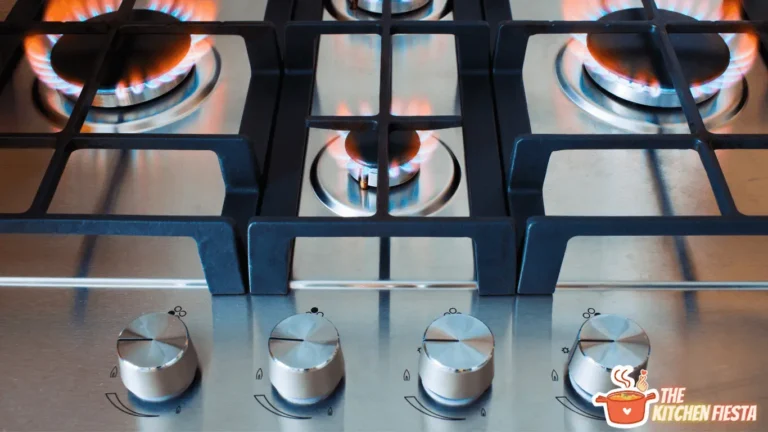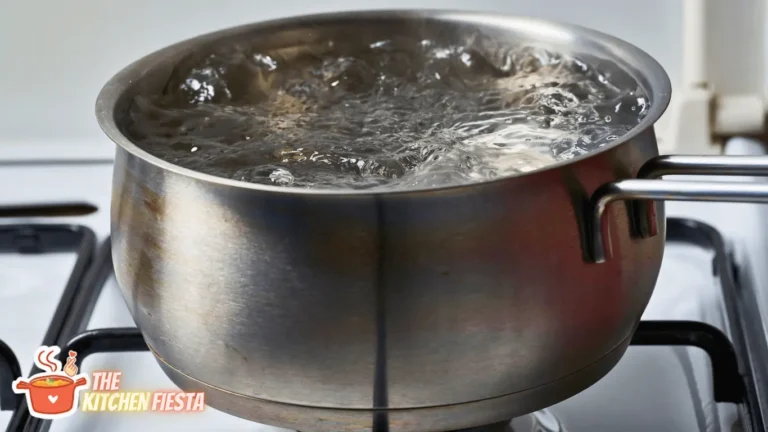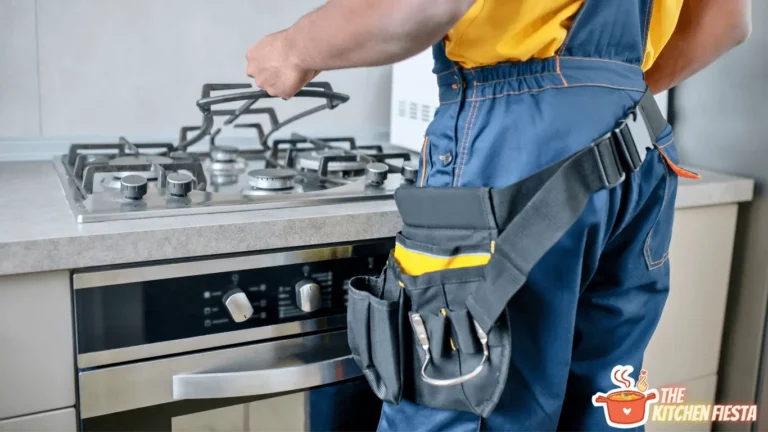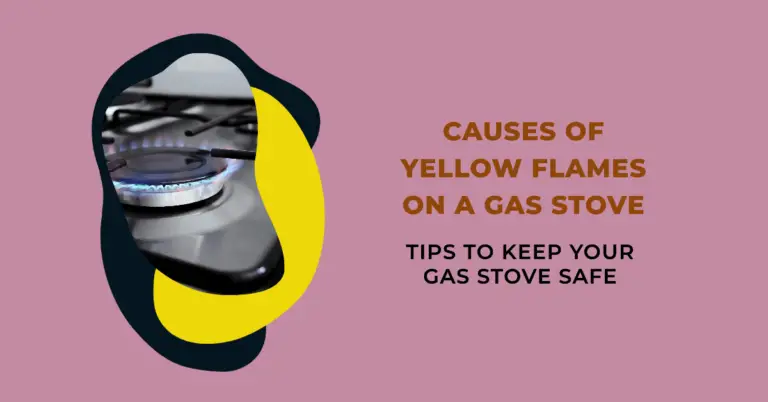How to Fix a Yellow Gas Flame on Your Stove? Expert Tips
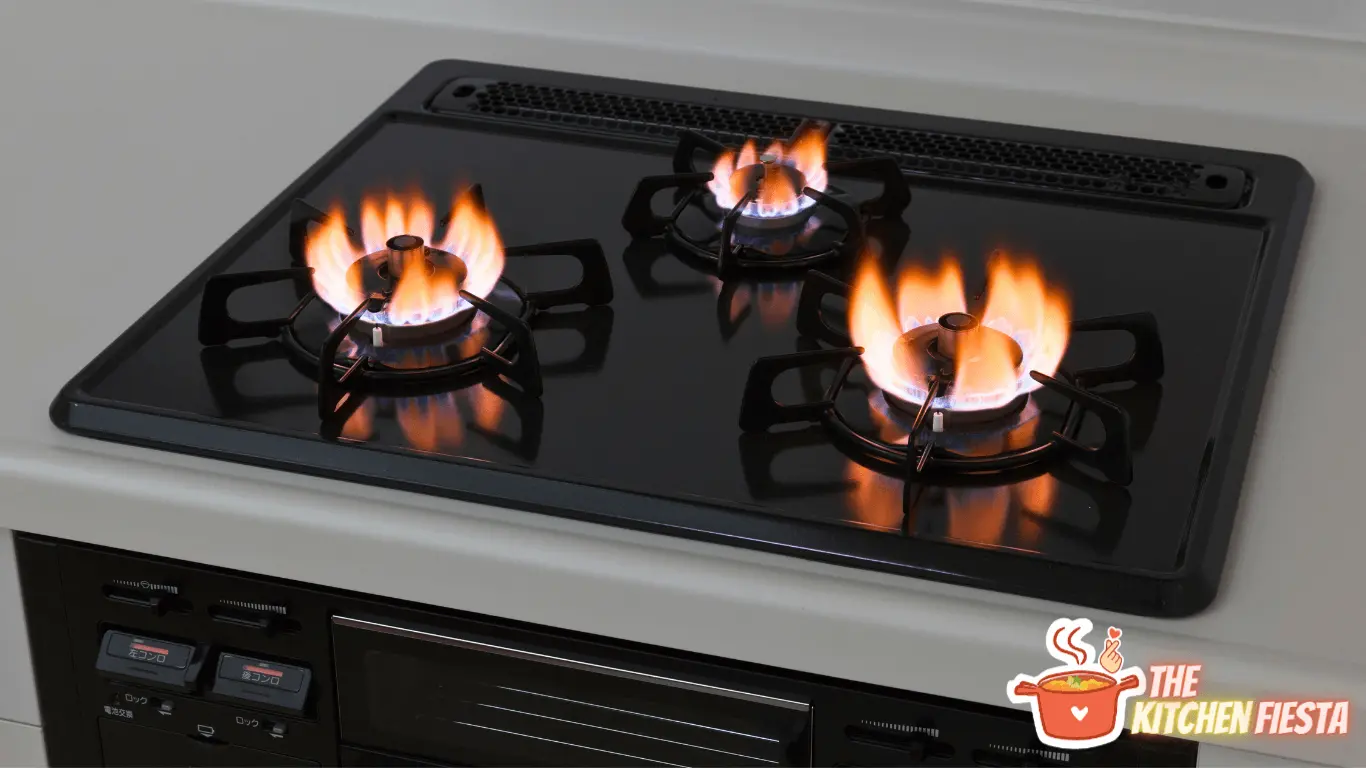
Have you noticed that the flames on your gas stove burners have turned an orangey-yellow color instead of the normal blue? A yellow flame on a gas stove is usually a sign that something is wrong with your burner setup and needs to be addressed.
This comprehensive guide will walk you through the common causes of yellow flames and provide solutions to help you fix the issue and get your burner flames back to their proper blue hue.
What exactly causes yellow gas flames?
Why is it important to fix a yellow gas flame?
What steps should you take to troubleshoot and resolve yellow flame problems?
We’ll cover all of this and more – including maintenance tips to prevent yellow stove flames from returning. By the end of this article, you’ll know how to get your gas stove burning blue again.
What Causes Yellow Flames on a Gas Stove?
A blue flame is the normal color produced when natural gas combusts with oxygen. This blue color is the result of carbon dioxide emission.
Yellow, orange, and red flames indicate that combustion is incomplete. The yellow flame contains unburnt fuel particles that produce soot and carbon monoxide – neither of which you want in your home.
There are several potential causes of incomplete combustion that can lead to yellow flames on your gas stove:
Clogged Burner Ports
The small holes on the top of your stovetop burners are called burner ports. These ports allow gas and oxygen to mix properly for clean combustion.
Over time, food particles, grease, and other debris can clog up the burner ports. This restricts oxygen flow during combustion and prevents the gas from burning completely – resulting in yellow flames.
Dirty Burners
Even if the burner ports themselves aren’t clogged, a buildup of grime and residue on the burners can have the same impact. Dirt, spills, grease, and food all interfere with oxygen accessing the gas flame.
Air Shutter or Venturi Tube Issues
Behind each burner is a small adjustable opening called the air shutter. Adjusting this shutter regulates the amount of air that mixes with the gas before burning.
If the air shutter is closed too far or becomes blocked, it can starve the flame of oxygen. This lack of air causes incomplete combustion and yellow flames.
Related to the air shutter is the venturi tube – which also controls air flow. If this tube becomes detached or misaligned, it disrupts proper air/gas mixing.
Problems with the Gas Regulator
The regulator controls the amount of gas released from your home’s supply pipes. If the regulator isn’t working right, it can result in low gas pressure or inadequate gas flow to the burners.
Too little gas flow due to regulator issues leads to incomplete combustion and yellow flame color. A damaged regulator that allows too much gas pressure can also create a hazardous situation.
Damaged or Faulty Gas Valve
Each burner has its own gas valve that must open to allow fuel to flow. If the valve is faulty, broken, or miscalibrated, it may not permit sufficient gas flow to the burner.
Like low regulator pressure, an insufficient supply of gas due to a bad valve leads to incomplete combustion and yellow flames.
Improper Burner Installation
The various burner components must align correctly and sit flat against the stovetop surface for proper functioning. If the burner caps, bases, ports, orifices, etc. get shifted out of position it affects air/gas flow.
Improper burner alignment or installation is another possible cause of disrupted combustion that creates yellow flames on gas stoves.
Gas Leak
If you have a gas leak somewhere in your burner’s supply line, air can mix with the fuel before combustion. Introducing air into the gas flow hampers the combustion process and causes yellow burning flames.
In addition to yellow flames, other signs of a gas leak include the smell of rotten eggs, sooty black residue around burners, and excessive condensation or fogging on the stove surface when in use.
Why It’s Important to Fix a Yellow Gas Flame?
Seeing yellow flame colors where you should see blue is concerning. Yellow gas flames in particular indicate combustion issues that can negatively impact safety and indoor air quality.
Here are some key reasons it’s important to fix yellow flames on your gas stove right away:
- Incomplete combustion – Yellow flames contain unburnt fuel. This means your stove is wasting energy and producing more air pollution.
- Carbon monoxide risks – The incomplete combustion creating yellow flames also releases carbon monoxide – a deadly, odorless gas.
- Fire hazards – Yellow flames are often erratic and can more easily spread, increasing fire risks.
- Excessive soot – The unburnt particles in yellow flames produce sooty residue inside your home.
Your safety and health depend on clean, complete blue flame combustion. Take yellow flames seriously and address the issue promptly.
How to Fix a Yellow Flame on Your Gas Stove?
The specific steps to fix your yellow gas flames depend on the underlying cause.
Try working through these troubleshooting methods one at a time until you resolve the issue:
1. Clean the Burners
Cleaning is often the easiest and most effective solution for yellow stove flames. Dirty burners are a very common cause of combustion issues.
Start by turning off the gas supply and unplugging the stove. Remove the burner caps and lifts the burners up from the cooktop surface.
Use a stiff brush, compressed air, pipe cleaners, or other tools to remove all visible dirt, grime, food particles, and grease from the burner ports and entire burner surface.
Ensure any blocked ports are cleared of obstructions. Carefully reassemble the burners, caps, and components when finished cleaning.
After cleaning, check if your flame color improves. Proper maintenance helps prevent yellow gas flames.
2. Adjust the Air Shutter
If cleaning the burners doesn’t fix it, try adjusting the air shutter. Locate the movable metal plate with an open slot on the back or side of the burner.
Slowly close the shutter to restrict air flow – this should make the flames more yellow. Then keep opening the shutter gradually until the flames turn blue.
Be patient finding the optimal shutter adjustment for clean combustion. Mark the final position with a marker for future reference.
3. Test the Gas Pressure
Low gas pressure reaching the burners is another culprit for yellow flames. Use a manometer gauge to check pressure at the regulator and along the supply line.
Compare readings to your stove manufacturer’s specified pressure requirements. If pressure is too low, contact your gas provider for assistance.
You may need to replace old pipes, clear blockages, or upgrade the regulator to achieve proper gas flow and pressure. This restores normal blue flame combustion.
4. Inspect the Gas Valves
Faulty or damaged gas valves can limit fuel supply to burners. Carefully examine the valves controlling each burner – looking for visible defects, corrosion, leaks, or other abnormalities.
Perform leakage tests and use valve calibration tools to assess proper functioning. Replace any faulty valves allowing insufficient gas flow.
5. Realign Burner Components
Ensure all burner components like caps, bases, ports, tubes, etc. are correctly positioned. Misaligned parts disrupt air/gas flow.
Refer to your owner’s manual for proper burner configurations. A technician can also realign or replace any damaged pieces.
6. Check for Gas Leaks
Inspect all gas line connections and seals for leaks using leak detector solution or an electronic gas leak detector. Watch for bubble formation.
Any identified leaks must be repaired to keep air from mixing with the gas supply and affecting combustion.
7. Call a Professional
For persistent yellow flame problems or if you smell gas, immediately turn off the gas valves and call for professional assistance.
Technicians have specialized tools and expertise for fully diagnosing issues. They can test, repair, or replace regulator valves, pipes, and stove components to fix stubborn problems. Professionals should handle any suspected gas leaks.
Maintenance Tips to Prevent Yellow Flames
With proper care and maintenance, you can avoid future yellow flame problems:
- Clean burners routinely – at least every few months or after spills/boilovers. Use brush, compressed air, mild detergent, etc. to remove residue from burner ports and surfaces.
- Keep the cooktop area clean and free of food, grease, overflow debris. Promptly wipe spills.
- Visually inspect the flame color every time you use the burners. Check that all flames burn blue along the entire height.
- Periodically adjust the air shutter to ensure proper air flow. Mark the position for optimal combustion.
- Have a professional perform annual gas stove inspections/tune-ups to check components and supply lines.
- Replace old brass gas connectors with newer stainless steel or corrugated gas hoses. Upgrade old supply pipes.
- Install carbon monoxide detectors for added safety with gas appliances.
With consistent burner maintenance and care, you can stop yellow gas flames in their tracks and regain peace of mind using your stove.
Common Questions about Yellow Gas Flames
Here are answers to some frequently asked questions about yellow burner flames:
Is a yellow gas flame dangerous?
Yes, yellow gas flames indicate combustion issues that can produce toxic gases and increased fire risks. Have the problem inspected and resolved immediately. Never ignore yellow flames.
Why did my gas flame turn from blue to yellow?
The most common causes are clogged burner ports, closed air shutters, insufficient gas flow due to regulator or valve problems, and gas leaks allowing air intake.
Should I ever adjust the air shutter myself?
Exercise caution, but you can try shutter adjustments to achieve blue flames. Close it incrementally until flames yellow, then open it slowly until flames are fully blue.
How often should I clean my gas stove burners?
Clean burners thoroughly every few months. Quickly wipe after spills. More frequent cleaning may be needed for heavy stove use.
Conclusion
YELLOW, flickering flames on your gas stove mean it’s time to take action. Addressing combustion issues promptly improves safety and performance.
The most common fixes involve basic maintenance like burner cleaning, air shutter adjustments, or gas flow corrections. But don’t hesitate to call a professional for any repairs beyond your comfort zone or expertise.
With some diligent troubleshooting and care, you can get your stove burning blue again quickly. Consistent maintenance will help avoid a recurrence of frustrating yellow flames in the future.

